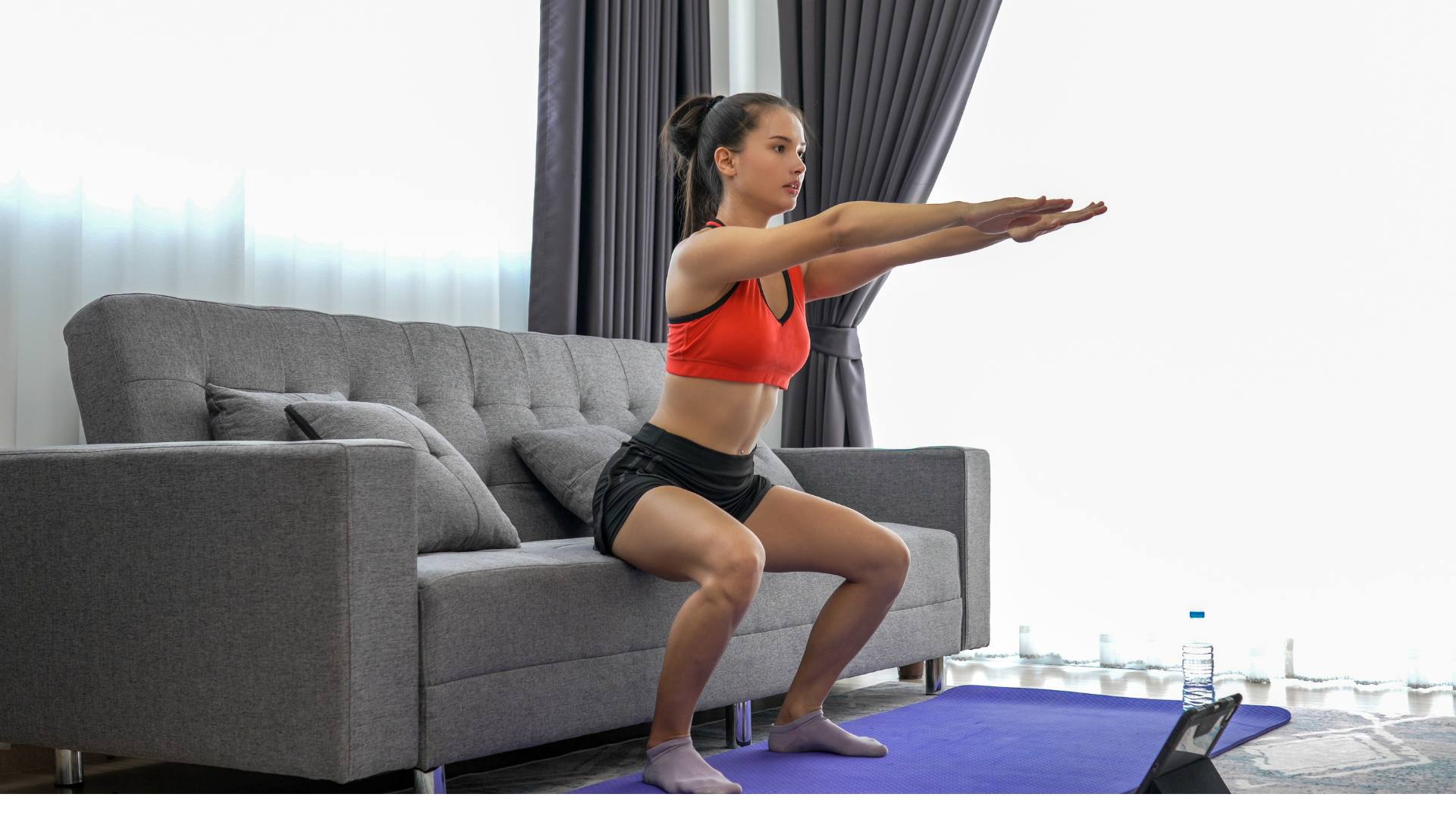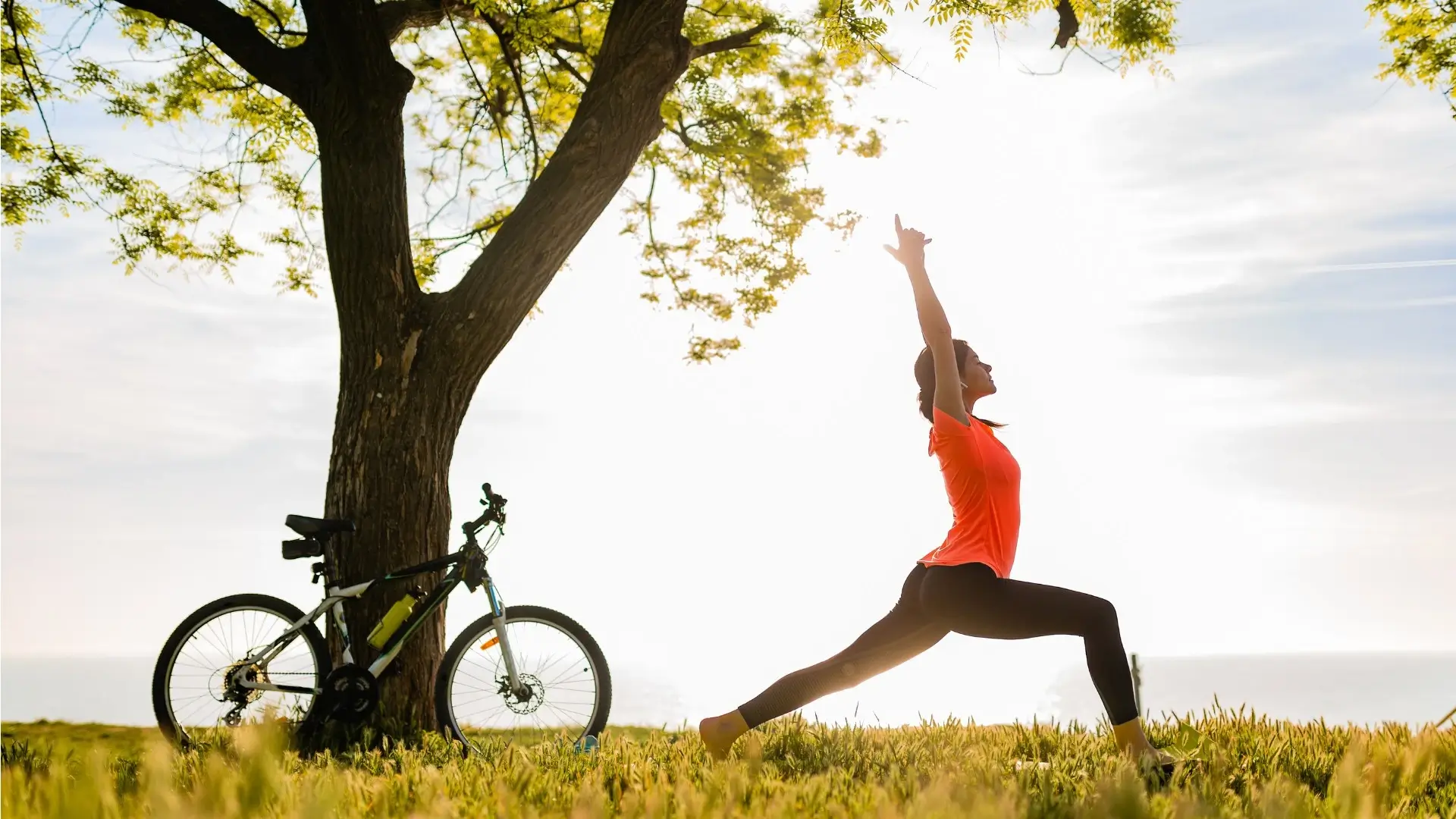The Ultimate Guide to Home Workouts: How to Stay Fit Without a Gym
In today’s busy world, it can be hard to find time to go to the gym. However, staying fit and healthy doesn’t necessarily require a gym membership. Home workouts offer an effective, convenient, and cost-efficient way to achieve and maintain your fitness goals. This comprehensive guide will provide you with everything you need to know about home workouts, from setting up your space to effective exercise routines, ensuring you stay fit without ever stepping foot in a gym.
Benefits of Home Workouts
Home workouts offer numerous advantages, including:
- Convenience: Exercise anytime that suits your schedule. With no commute time and the ability to work out at any hour, you can easily fit exercise into your day.
- Cost-effective: You don’t need costly gym memberships or equipment. Many effective exercises require little to no equipment, saving you money in the long run.
- Privacy: Work out in the comfort of your own home without feeling self-conscious. This can be particularly beneficial for beginners who might feel intimidated by a gym environment.
- Customization: Tailor your workout to meet your specific fitness goals and needs. Whether you’re focusing on strength, cardio, flexibility, or a combination, you can create a personalized plan.
- Time-efficient: Save time on commuting to and from the gym. This efficiency can make it easier to maintain a regular workout routine, even with a busy schedule.
Setting Up Your Home Workouts Space
Creating a dedicated workout space at home can enhance your exercise routine. Here’s how to set it up:
Choosing the Right Spot
Choose an area where you have plenty of space to move around. It could be a spare room, a corner of your living room, or even your backyard. Consider the following factors:
- Space: Ensure you have enough room to perform a variety of exercises without feeling cramped.
- Surface: Choose a flat, stable surface to prevent injuries. A carpeted area or exercise mat can provide cushioning.
- Environment: Pick a spot with good ventilation and natural light to keep you energized.
Investing in Basic Equipment
While many home workouts require no equipment, having a few essentials can be beneficial. Consider items like:
- Yoga mat: Provides a comfortable surface for floor exercises and stretching.
- Resistance bands: Versatile and portable, they add resistance to various exercises.
- Dumbbells: Available in different weights, they are great for strength training.
- Stability ball: Useful for core exercises and improving balance.
- Jump rope: Excellent for cardiovascular workouts.
Organizing Your Space
Keep your workout area tidy and inviting. Store your equipment neatly to avoid clutter. You might consider adding a small shelf or storage bin for your gear. A mirror can also be helpful for checking your form during exercises.
Effective Home Workout Routines
Here are some effective home workout routines that require minimal or no equipment:
Bodyweight Exercises
Bodyweight exercises are good for building strength and endurance without using any equipment. Here are a few key exercises:
- Push-ups: Great for strengthening the chest, shoulders, and triceps. Modify by doing them on your knees or against a wall if necessary.
- Squats: Target the quadriceps, hamstrings, and glutes. Ensure your knees do not extend past your toes for proper form.
- Lunges: Excellent for building leg and glute strength. Perform them forward, backward, or sideways to target different muscle groups.
- Planks: Strengthen the core and improve stability. Hold for as long as possible, focusing on maintaining a straight line from head to heels.
- Burpees: Full-body exercise that enhances cardiovascular fitness. Combine a squat, plank, and jump for a high-intensity move.
High-Intensity Interval Training (HIIT)
HIIT workouts include short, intense exercise bursts with quick rest periods in between. They are effective for burning fat and improving cardiovascular health. A typical HIIT session might include:
- Jumping Jacks: 30 seconds
- Mountain Climbers: 30 seconds
- Squat Jumps: 30 seconds
- High Knees: 30 seconds
- Rest: 30 seconds
Do this circuit 3-4 times to complete your workout. HIIT workouts can be customized with different exercises to keep them varied and interesting.
Yoga and Pilates
Yoga and Pilates are excellent for improving flexibility, strength, and mental well-being. Some popular poses and exercises include:
- Downward Dog: Stretches the hamstrings and calves, strengthens the arms and shoulders.
- Child’s Pose: Relieves tension in the back and shoulders.
- Pilates Roll-Up: Strengthens the core and improves flexibility.
- Warrior II: Strengthens the legs and enhances balance.
- Bridge Pose: Works the glutes and lower back.
Cardio Workouts
Cardio exercises can be easily done at home with little to no equipment. Some effective options include:
- Jump Rope: Great for improving cardiovascular health and coordination.
- Running in Place: Mimics the benefits of running without needing much space.
- Dance Workouts: Fun and engaging way to get your heart rate up.
- Stair Climbing: If you have stairs at home, use them for a vigorous cardio session.
- Kickboxing: Combines cardio and strength training for a full-body workout.
Tips for Staying Motivated
Staying motivated can be challenging, especially when working out at home. Here are a few tips to help you stay on track:
- Set Clear Goals: Define what you want to achieve and set realistic milestones. Whether it’s losing weight, building muscle, or improving flexibility, having a clear goal can keep you focused.
- Create a Schedule: Plan your workouts and stick to a consistent routine. Treat your workout time like an important appointment you can’t miss.
- Track Your Progress: Keep a workout journal or use a fitness app to monitor your progress. Seeing improvements can boost your motivation.
- Find a Workout Buddy: Partnering with a friend can make workouts more enjoyable and keep you accountable. Virtual workout sessions can also be effective.
- Mix It Up: Avoid monotony by varying your exercises and trying new routines. This can keep your workouts exciting and prevent plateaus.
- Reward Yourself: Set up a reward system for reaching your fitness goals. Rewards can be anything that motivates you, from a new workout outfit to a relaxing massage.
Nutrition and Recovery
Proper nutrition and recovery are crucial components of any fitness regimen. Here’s how to support your home workouts:
Balanced Diet
Ensure you’re eating a balanced diet rich in proteins, healthy fats, and complex carbohydrates. Eating well gives you energy for your workouts and helps you recover.
- Proteins: Essential for muscle repair and growth. Include lean meats, eggs, dairy, beans, and nuts in your diet.
- Healthy Fats: Important for overall health and energy. Examples include avocados, seeds, nuts, and olive oil.
- Complex Carbohydrates: Provide sustained energy. Opt for whole grains, vegetables, and fruits.
Hydration
Drink lots of water to stay hydrated before, during, and after your workouts. Staying hydrated keeps your energy up and supports your overall health.
Rest
Give your muscles time to recover by getting enough sleep and taking rest days. Aim for 7-9 hours of sleep per night to facilitate recovery and performance.
Stretching
Perform dynamic stretches before workouts and static stretches afterward to prevent injuries and improve flexibility. Stretching helps reduce muscle tension and enhances circulation.
Home Workouts Safety Tips
Safety is paramount when working out at home. Follow these tips to avoid injuries:
- Warm Up Properly: Always start with a warm-up to prepare your muscles and joints. A proper warm-up boosts blood flow and lowers the chance of injury.
- Use Proper Form: Focus on maintaining proper form to prevent strain and injuries. If you’re unsure about an exercise, look up instructional videos or consult a fitness professional.
- Listen to Your Body: If you feel pain or discomfort, stop and reassess your technique. It’s important to distinguish between discomfort from exertion and pain from potential injury.
- Progress Gradually: Increase the intensity and duration of your workouts gradually to avoid overtraining. Gradual progression helps prevent burnout and injuries.
Sample Home Workout Plan
Here’s a sample week-long workout plan to get you started:
1st Day: Full Body
- Warm-up: 5 minutes of jumping jacks
- Push-ups: 3 sets of 15 reps
- Squats: 3 sets of 20 reps
- Planks: 3 sets of 1-minute hold
- Cool-down: 5 minutes of stretching
2nd Day: Cardio HIIT
- Warm-up: 5 minutes of light jogging
- High Knees: 30 seconds
- Mountain Climbers: 30 seconds
- Burpees: 30 seconds
- Rest: 30 seconds
- Repeat 4 times
- Cool-down: 5 minutes of stretching
3rd Day: Yoga
- Warm-up: 5 minutes of gentle stretching
- Downward Dog: 1-minute hold
- Warrior II: 1-minute hold per side
- Child’s Pose: 2-minute hold
- Cool-down: 5 minutes of deep breathing
4th Day: Rest or Light Activity
5th Day: Lower Body
- Warm-up: 5 minutes of light cardio
- Lunges: 3 sets of 15 reps per leg
- Glute Bridges: 3 sets of 20 reps
- Calf Raises: 3 sets of 25 reps
- Cool-down: 5 minutes of stretching
6th Day: Cardio and Core
- Warm-up: 5 minutes of jumping rope
- Jumping Jacks: 1 minute
- Plank: 1-minute hold
- Bicycle Crunches: 3 sets of 20 reps
- Cool-down: 5 minutes of stretching
7th Day: Active Recovery or Yoga
- Warm-up: 5 minutes of gentle stretching
- Yoga Flow: 20 minutes of various poses
- Cool-down: 5 minutes of deep breathing
Conclusion
Home workouts offer a flexible, cost-effective, and convenient way to stay fit. By setting up a dedicated workout space, investing in basic equipment, and following a structured routine, you can achieve your fitness goals without the need for a gym membership. Remember to stay motivated, prioritize nutrition and recovery, and always practice safety to maximize the benefits of your home workouts. Whether you’re a beginner or an experienced fitness enthusiast, the tips and routines in this guide will help you maintain a healthy and active lifestyle right from the comfort of your home.




